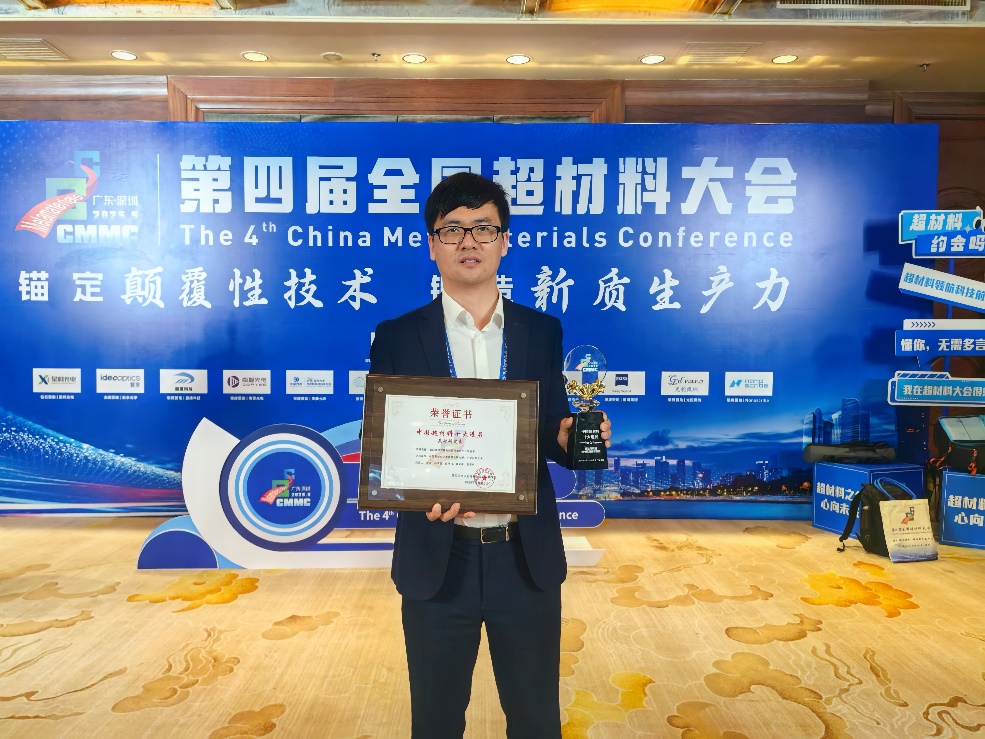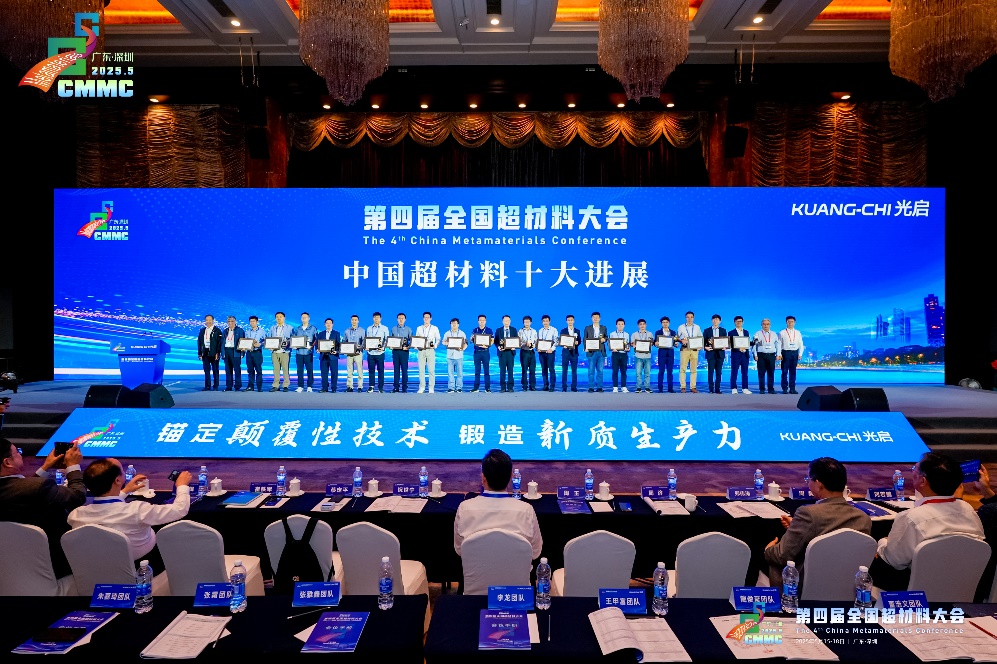
Congratulations to Prof. Xun Cao's team for their Tri-band electrochromic Smart window research being selected as one of the Top 10 Advances in Chinese Metamaterials
On May 16, the 4th National Congress on Metamaterials was held in Shenzhen. During the opening ceremony, the "Top 10 Advances in Chinese Metamaterials" were officially announced, and a group of scientific research teams and individuals who had achieved groundbreaking results were honored. A total of 20 projects, categorized as either basic research or technological innovation, made the list. Shining Zhu, a member of the Chinese Academy of Sciences and Chairman of the Congress Academic Committee, announced the evaluation results. Tiejun Cui, a member of the Chinese Academy of Sciences and Chairman of the Congress, along with Zhou Ji, a member of the Chinese Academy of Engineering, presented trophies and certificates to the winning teams in the basic research category.
The team led by Researcher Xun Cao from the Shanghai Institute of Ceramics, Chinese Academy of Sciences, was selected for the "Top 10 Advances in Chinese Metamaterials (Basic Research Category)" for their research on "Tri-band electrochromic Smart window for energy savings in buildings". This recognition followed a rigorous review process including preliminary formal review, peer review, and conference evaluation.
This research introduces a novel tri-band electrochromic smart window based on metamaterial design principles. This innovation achieves the first independent control of the full solar spectrum across visible (VIS), near-infrared (NIR), and mid-infrared (MIR) wavelengths by inducing a multi-phase transition mechanism through deep ion intercalation.Thisadvanced approach creates a "multi-band decoupled radiation interface" (high/low radiation interface), significantly optimizing the window's radiative heat exchange. As a result, its energy-saving efficiency shows an 80% improvement over existing commercial low-emissivity (Low-e) glass.
This breakthrough addresses the limitations of traditional electrochromic materials in spectral regulation. By combining metamaterial artificial microstructure design (low-emissivity ITO/PE interface and high-emissivity quartz substrate), it enables both optimized solar radiative heat gain and synergistic passive radiative cooling within a single device. Its energy-saving efficiency has been validated through experiments in various global climate zones, proving its superiority over commercial low-emissivity glass. This interdisciplinary research, integrating metamaterial optical design, ion intercalation control, and non-equilibrium thermodynamics, offers a new solution for achieving building energy efficiency and carbon neutrality goals. The related research was published in Nature Sustainability and can be accessed at: https://doi.org/10.1038/s41893-024-01349-z.
Metamaterials stand as a highly dynamic and interdisciplinary frontier in science and technology this century, serving as the wellspring for numerous disruptive technologies. The National Congress on Metamaterials is dedicated to advancing China's theoretical research, design and fabrication studies, and device application research in this field. It aims to enhance academic and technical exchange, along with application promotion, between the metamaterials academic and industrial communities, thereby fostering knowledge innovation, technological innovation, and application development in China's metamaterials research.


The awarding ceremony venue

